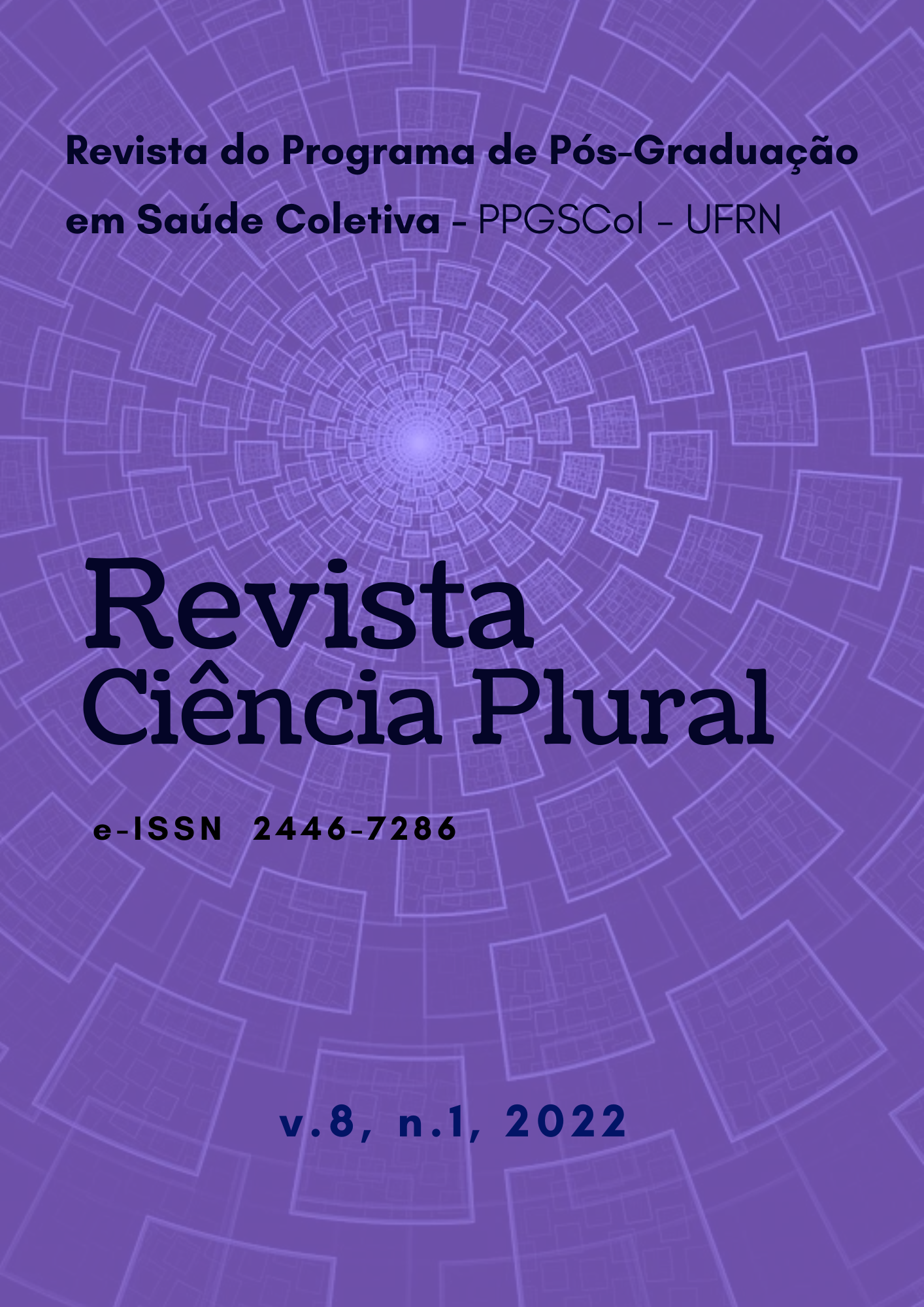PERFIL EPIDEMIOLÓGICO DO CARCINOMA DE CÉLULAS ESCAMOSAS DE CAVIDADE ORAL E OROFARINGE DIAGNOSTICADOS NA LIGA MOSSOROENSE DE ESTUDOS E COMBATE AO CÂNCER
DOI:
https://doi.org/10.21680/2446-7286.2022v8n1ID24820Abstract
ABSTRACT
Introduction: Squamous cell carcinoma (SCC) of the oral cavity and oropharynx is a common malignant epithelial neoplasia, responsible for 90 to 95% of the head and neck tumors found in Brazil and the United Kingdom, with 3300 new cases in 2020 of oral tumor in the Nordeste region and 300 in Rio Grande do Norte. It is linked to behavioral habits, such as long-standing smoking and alcoholism and the human Papillomavirus (HPV) infection, in addition to presenting considerable mortality. Objective: This study aimed to describe the epidemiological profile of patients diagnosed with this neoplasia between 2006 and 2018 at the Mossoroense League of Studies and Combating Cancer (LMECC), Mossoró, RN.. Methodology: An observational epidemiological study with a cross-sectional design was carried out based on data present in the medical records and anatomopathological reports belonging to the LMECC and in the Mortality Information System. The data were analyzed using Software R, using the Wilcoxon-Mann-Whitney test for inferential analyzes and the Kaplan-Meier method for analyzing survival. Results: During the study, 353 medical records were analyzed, of which 128 were excluded. Of the total medical records analyzed, 70.22% were men, 65.33% aged between 46-70 years and with a predominance of white (51.57%). Of these, 25.78% were smokers and 39.11% smokers and alcoholics. The main treatment identified was the association of surgery, chemotherapy and radiation therapy. There were 49.10% deaths from cancer. The main pathological stage found was IVA (34.22%). They had a longer survival in 60 months, patients over 70 years of age at diagnosis and those whose treatment was exclusively surgical, and when considering behavioral habits, a lower 60-month survival rate was observed for those individuals who had a habit of alcoholism and smoking. Conclusions: Our results suggest that the large number of deaths found resulted from the SCC and that behavioral habits probably influenced this clinical outcome. Furthermore, it highlights the importance of early diagnosis in order to reduce deaths and improve the quality of life of affected individuals and the need to implement educational campaigns that inform the population about the main risk factors associated with the development of this neoplasm.
Keywords: Neck Squamous Cell Carcinoma; Squamous Cell Carcinoma; oral Neoplasms; Oropharyngeal neoplasms; Epidemiology.
Downloads
Downloads
Published
How to Cite
Issue
Section
License
À Revista Ciência Plural ficam reservados os direitos autorais referente a todos os artigos publicados.

 Português (Brasil)
Português (Brasil) English
English Español (España)
Español (España)













